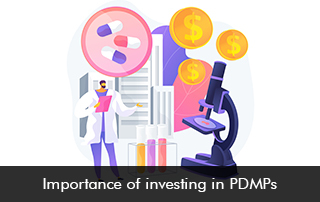To combat the opioid epidemic that has taken more than 500,000 lives in the past two decades, all 50 states have implemented prescription drug monitoring programs (PDMPs). The information from these robust programs can alert clinicians to intervene to improve patient outcomes.
What is a PDMP?
A prescription drug monitoring program is an electronic database that helps to track controlled substance prescriptions. The data from the PDMP is valuable since it can be used when patient history is unavailable or when patient care is transitioned to a new healthcare provider. The robust prescription drug monitoring program (PDMP) can also identify patients that have a risk for overdose.
Positive patient outcomes through prescription drug monitoring programs
PDMPs help to improve the patient and provider relationship as they increase transparency and trust. Prescription drug monitoring programs can boost patient outcome levels through different circumstances.
- Through polypharmacy prescribing, clinicians can antedate the risk of potential complications.
- When the patient knows the PDMP policy they may be more available.
- Clinicians can easily check the PDMP which eliminates the need for a drug screening.
Benefits of PDMPs
For clinicians
Prescription drug monitoring programs help in the continuity of care in different care settings such as primary care, pain management, and substance abuse care. The database in the program assists clinicians by improving awareness of every actively controlled substance medication. Prescribers and physicians can use the data from the PDMP to monitor compliance, enhance patient safety, and make confident prescribing decisions.
For patients
The use of PDMPs can make way for patient safety and also protect patient privacy. When at-risk patients are identified they may be encouraged to seek their provider’s help for the right care and treatment.
When should a clinician check the PDMP?
A prescription drug monitoring program should be checked when initiating opioid therapy for acute or chronic pain. The PDMP should also be checked when opioid therapy is continued. It is advised to see the data before every opioid prescription to boost patient safety.
Advancing PDMP and EHR integration
To support the use of health IT to address the drug overdose epidemic, the ONC, and the CDC collaborated on advancing PDMP and Electronic Medical Records (EMR) software and EHR integration project. The main goal of this project is to scale and progress vendor agonistic PDMP integrations with health IT software systems in hospitals, primary care, and outpatient settings. Prescription drug monitoring programs are promising tools that can be leveraged by clinicians to identify drug-seeking behavior in patients and take informed clinical decisions. By implementing PDMP practices can combat the epidemic and focus on high-quality patient care.






